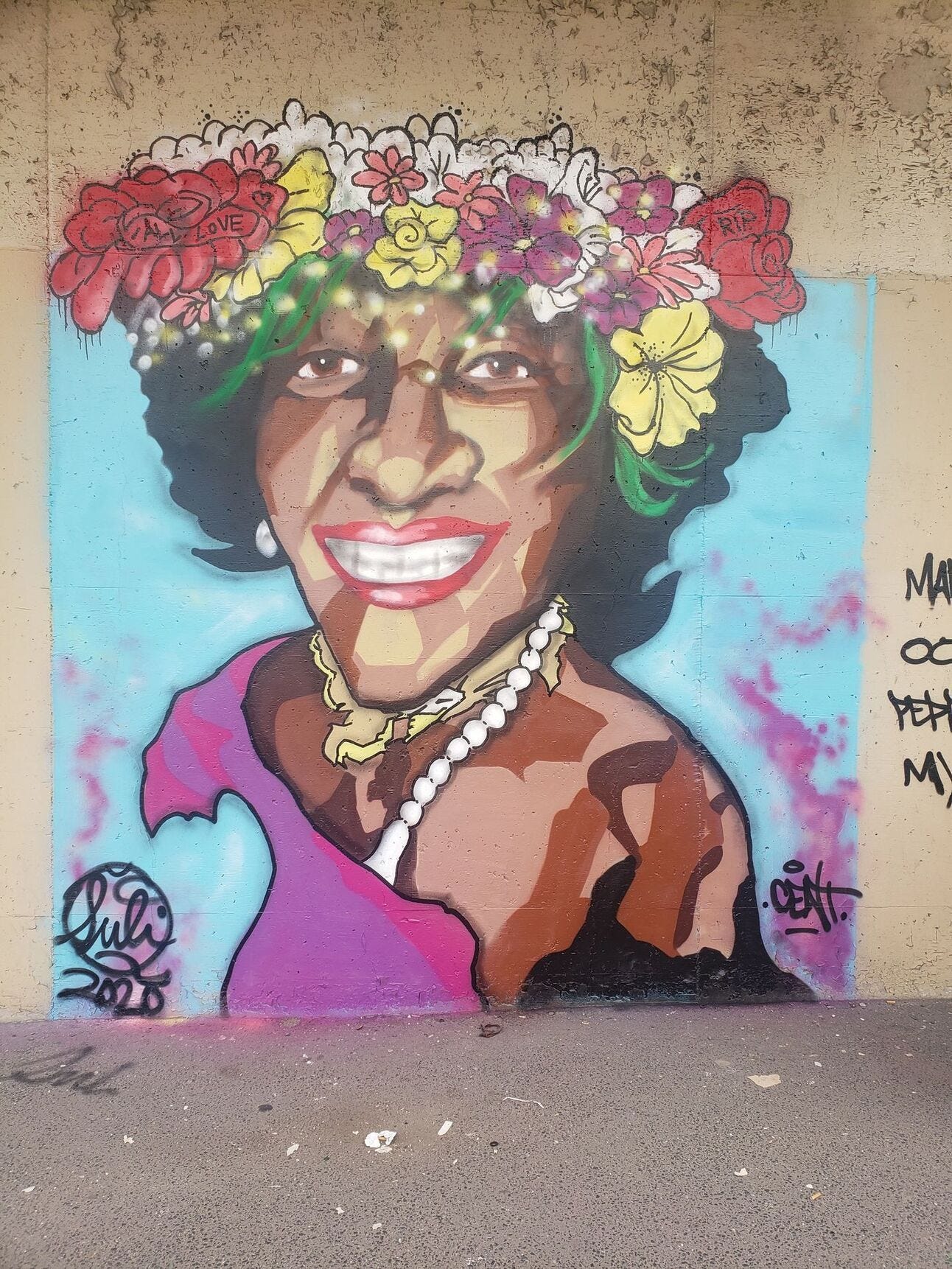Discover the Dark Side of AI
July 5, 2023
T-16 more days… until the premiere of the Barbie Movie. If you’ve been on the internet at all in the past few months, you’ve probably come across a Barbie collab.
The brand has released collaborations with all types of brands and you can now get “Barbie Pink:” shoes, outdoor furniture, luggage, an Xbox, and literally so much more.
Makes one wonder… WHAT is the marketing budget for this movie?!
This TikToker shared a list of all of the Barbie collaborations and it’s worth a watch.
Click here to watch the TikTok.

photo via Beis
🛠 Handy Dandy Tools
Ideas & To-do's: Write notes, keep ideas, and even mind map. One place for you to manage it all. Use Effie free here.
Email: Manage Gmail & your inbox like a pro and use built in scheduling connected to your Google calendar. Try InboxPro free here.
Booking & Calendar: Add video to your booking page. Get rid of Calendly with this lifetime deal. Check out Callendo here.
In today’s issue:
The Dark Side of AI
How Meta and Google Accidentally Paid for Global Misinformation
Privacy vs. Authenticity: Momfluencers Weigh in on Children’s Privacy
The Baseball Team with one of the Best Content Strategies I’ve seen
🔑 Key Stories
When Bots Write the News: AI’s Role in the Surge of Junk Websites
AI, particularly large models like ChatGPT, have been used to create a surge in “junk” websites designed to attract advertisers.
Over 140 major brands have been found to unknowingly advertise on such AI-generated, unreliable sites.
This issue exacerbates an existing problem in the industry where about 21% of ad impressions land on “made for advertising” websites, wasting an estimated $13 billion annually.
How does AI contribute to ad fraud in the content industry?
AI models like ChatGPT supercharge the creation of ad-focused websites, exponentially increasing the number of platforms available for ad placements and advertisers often don’t know about it.
These models make it possible for fraudulent actors to remain anonymous and even generate fake creator bios and images.
The trend is expected to grow as language models continue to advance.
Read more about how this = a big risk not only for potential misinformation campaigns, but also for the waste of advertising budgets & resources (Link).
AND you don’t want to read fake or misleading content because of all of this.
Facebook & Google’s Unintended Roles in Funding Global Misinformation
Tech giants Facebook (Meta) and Google are indirectly financing the spread of misinformation globally by monetizing clickbait content.
The MIT Technology Review investigation revealed that the platform’s monetization programs, aimed to improve user experience and capture ad revenue, have been exploited by clickbait farms.
The impacts can be seen in countries like Myanmar where Facebook is a major source of internet access, and misinformation has played a part in escalating ethnic and religious tensions.
How have these 2 companies accidentally fueled the spread of misinformation?
Facebook’s Instant Articles Program and Audience Network have been manipulated by clickbait farms to proliferate largely plagiarized content and amass substantial ad revenue (Link).
These clickbait farms capitalize on the platform’s lack of quality control and its system that rewards multiple postings of the same content, creating an environment ripe for the spread of misinformation.
Despite attempts to weed out these kinds of actors, the enforcement has been reported as “delayed and incomplete,” with new pages often created as soon as the old ones are taken down, illustrating the systemic nature of the problem.
“Financially motivated spam has been around since the beginning of the internet. But instead of selling fake viagra and sunglasses, this newest iteration relies on tabloid-style clickbait on whatever the hot-button issue of the day is.” @DavidAgranovich on Twitter
Click here to read how Meta and Google have responded to the investigation and what changes have since been made (Link).
Momfluencers Discuss Children’s Privacy vs. Authenticity
More and more content creators, are debating the balance of sharing their personal lives and respecting their children’s right to privacy.
Several creators have raised concerns about overexposure, “digital kidnapping,” and potential misuse of children’s images online.
Adams shared that “all children, all humans deserve the right to privacy, informed consent and safety, and having so much of your image and info posted publicly on the internet compromises that.”
How are momfluencers adapting their content strategies to protect their children’s privacy?
Some creators like Emma Nacewicz have adjusted by withholding specific personal info and details about their location (Link).
Alex MacLaren takes another approach by blurring her children’s faces.
And some parents with older children, like Kristina Braly, have allowed their children to decide when and where they appear in her content.
What do you think? Should children have more privacy online? Should parents be posting about their children? Read what more parents think here.
🤓 Bonus Stories
The TikTok “Creative Challenge” asks creators to make branded videos for a chance at earning ad money $$ (Link).
Steal this 3-step content optimization blueprint that drove a 121.9% traffic increase in one year (Link).
Open AI (company that created ChatGPT) plans to launch an App Store for all things AI (Link).
🔍 Try this: Content Tips & Suggestions
Show me a lil something something
Give your readers a peek behind the curtain by offering them a virtual "behind-the-scenes" tour. Depending on your organization or topic of the newsletter, this could take different forms.
For example, if you're a tech company, you could have one of your engineers walk through the process of coding a new feature.
If you're a nonprofit, you could share a day in the life of a volunteer or beneficiary.
Or, if you're an author or editor, you could share about your writing or editing process, showing draft versions of your work and explaining how you improve them over time.
To increase engagement, consider making this an interactive experience.
You could allow readers to submit questions beforehand that you'll answer during the tour, or host it live so they can ask questions in real time.
This kind of content is not only engaging, it also fosters a deeper connection between you and your readers by giving them insight into the work that goes into your products, services, or stories.
🌟 Creator Spotlight

The Bananas via their Twitter
The Savannah Bananas Have the Best Content Strategy
Get ready to go bananas for a team that's been shaking up the world of baseball in an utterly unique way.
The Savannah Bananas, known for their unconventional approach to America's favorite pastime, have quickly evolved from a mere sports franchise into a global phenomenon.
But what's the secret behind their meteoric rise?
In this article, we dive deep into the world of the Savannah Bananas and explore how they've carved out a unique brand identity that keeps their fans engaged, entertained, and always coming back for more.
The Bananas have successfully defined themselves not just as a sports team but as a fun-loving group of players unafraid of pushing the envelope.
They've found a winning balance between athletic performance and audience engagement, turning their baseball games into continuous streams of excitement.
Ready to discover how they leveraged fun as a strategy, fostered a fan-centric culture, embraced innovation, and stayed authentic to the game while continuously challenging norms?
Trust us, it's a journey you won't want to miss!
And if you haven’t seen their TikToks, ya gotta watch a few. They’re so fun.
This tale of bananas and baseball is guaranteed to offer valuable insights not just for sports enthusiasts but for anyone looking to transform their brand into an engaging, content-rich powerhouse.
So what are you waiting for? Dive in and learn the Banana Way.
Click here to read the full article.
If you have any thoughts or questions, let us know at brittany@createitcompany.com
Have a Creator Spotlight idea or request?
♥️ Weekly Cause

Support the Marsha P. Johnson Institute
The Marsha P. Johnson Institute (MPJI) is a beacon of hope, fighting for the rights of Black transgender people in the U.S.
This organization addresses systemic issues like violence, unemployment, and healthcare disparities, which disproportionately affect the Black transgender community.
When you donate to the MPJI, you're contributing to a significant cause. Your support helps foster systemic change, breaking down barriers to equality.
In a world where Black transgender voices are often marginalized, your donation helps ensure they're recognized and valued.
Support the Marsha P. Johnson Institute - help build a world where everyone can live authentically.
Donate to the Marsha P. Johnson Institute
💭 Final thoughts
For those of you also in the States, hope you had a solid day off yesterday.
For those of you who aren’t, hope you had a solid Tuesday. 🫡
See you next week,
Brittany@Create It



